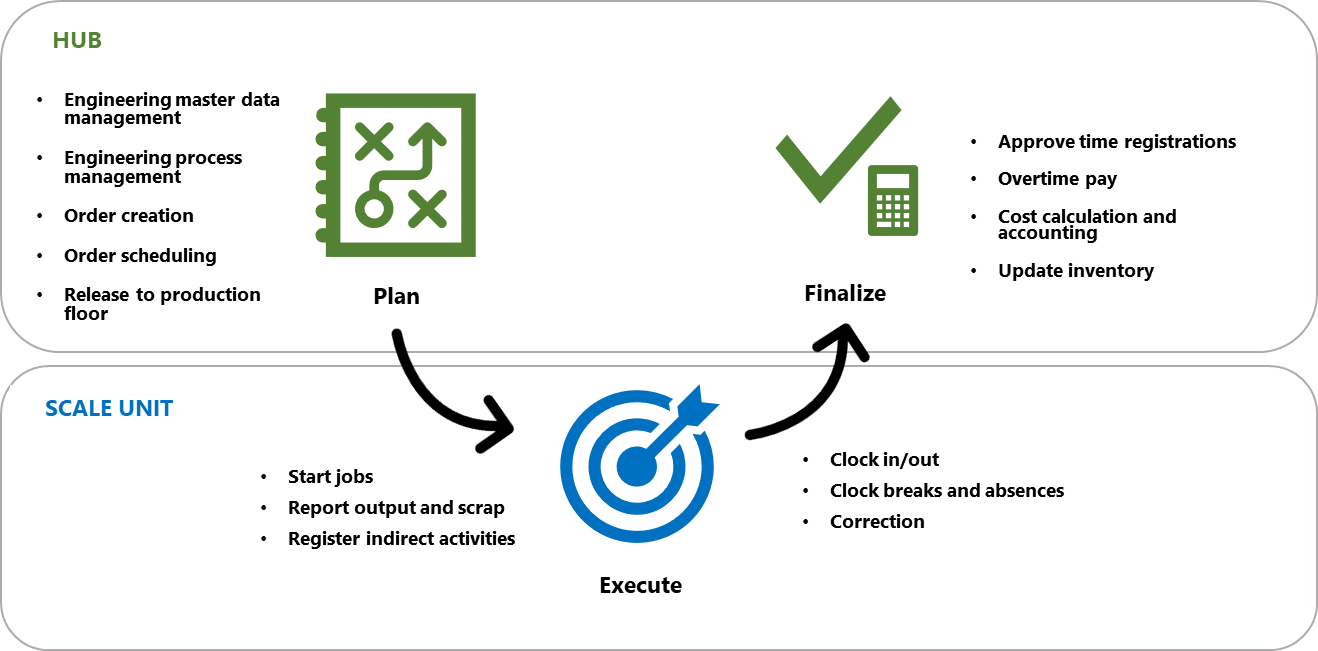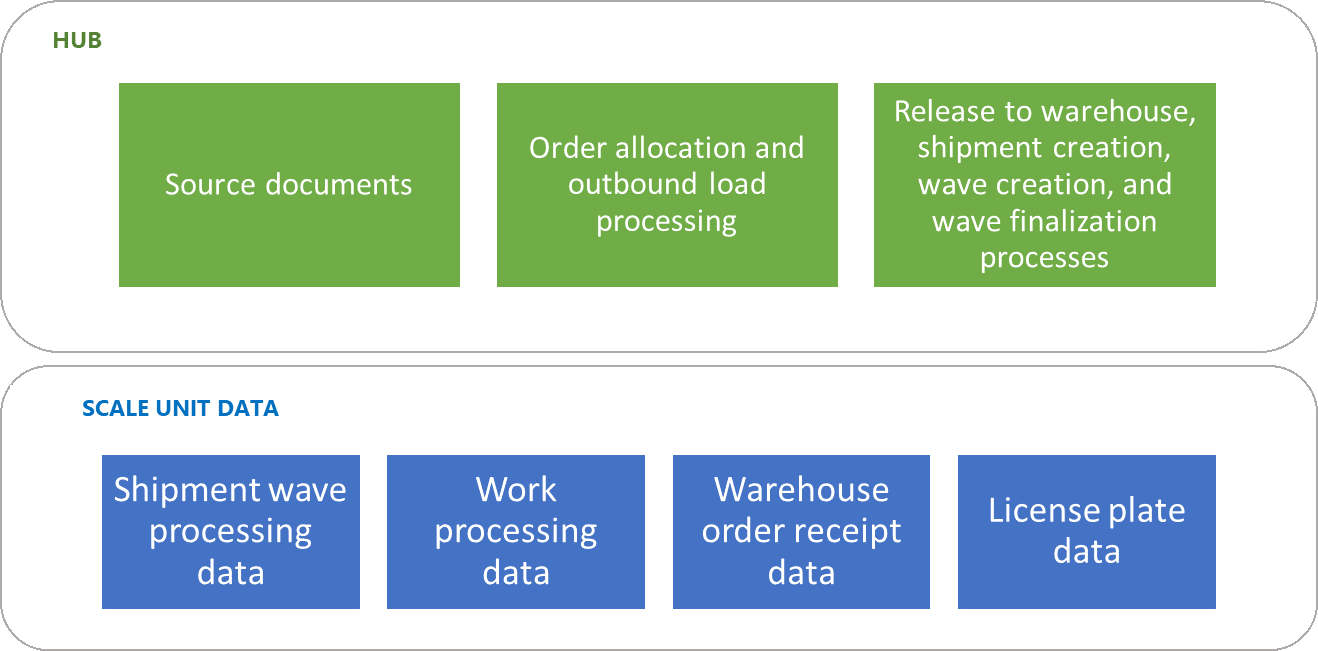Many organizations need to run mission-critical processes around the clock without interruption. Cloud and Edge scale units enable manufacturing and distribution organizations to continue running manufacturing and warehousing processes without interruption, even when dealing with network connectivity loss and latency issues. To implement the Cloud and Edge scale units, you must have the following add-ins with your Supply Chain Management subscription:
- Cloud Scale Unit Add-in for Dynamics 365 Supply Chain Management
- Edge Scale Unit Add-in for Dynamics 365 Supply Chain Management
For more on deployment for the scale unit and workloads, visit the Step by step guide.
Manufacturing Execution Workloads
The scale units will extend your central SCM hub environment by adding dedicated processing capacity, they can be set up to run in the cloud or they can be run on the edge, or on-premises. By using this capability, your resources can continue to perform their work from their assigned workloads on edge when connectivity is lost. Workloads are predefined functions within your business that are delegated to your scale unit. These are part of the Manufacturing execution workloads for cloud and edge scale units. The manufacturing execution scale units allow workers to perform the following tasks:
- Clock in and out, record and absence
- Start job
- Bundle jobs
- Report progress
- Report scrap
- Indirect activity
- Break
- Report as finished and putaway
When using the scale unit, the execution phase of your production lifecycle will be split out into a separate workload and your plan and finalize phases will be run as back-office operations on the hub while the manufacturing execution workloads run on the scale units. Generally, the processes that are part of your workload can run automatically so that you can keep your hub and all the scale units in sync. Your data is asynchronously transferred between the scale units and hub.

Warehouse Management Workloads
Warehouse management workloads are similar to the manufacturing execution workloads discussed above. Data is synced between the hub and scale units, it is important to know that the data in the scale unit is the only data that is owned, this helps prevent multi-master conflicts. You must consider and understand which processes are owned by the scale units and which by the hub. The scale unit owns the actual wave processing after the release of the wave, which enables warehouse workers to process outbound work using a mobile device that is connected to the scale unit.

Cloud and Edge Considerations
Before you decide to deploy cloud and edge, you should consider the following:
- You must be a licensed customer of Dynamics 365 Supply Chain Management to deploy cloud and edge scale units.
- Some of the capabilities are still in preview and not in general availability. You should be up to date on all functionality that is not fully released. Functionality may be added in releases in the future.
- Once enabled the scale unit feature and deployed workloads cannot be removed. Note: a feature will be released soon that will enable disassociation or repurposing of scale units.
- If you deploy the hub and the scale unit in separate developer boxes, then you will need two LCS cloud-hosted developer boxes or VHDs (10.0.16 or higher). Otherwise, you will only need one clean LCS cloud-hosted developer box or VHD (10.0.16 or higher).
- On-premises environments can’t function as hubs for scale units. Hub environments must always be cloud-hosted.
- Your production environment must be a Self-service type in Lifecycle Services.

 RSMUS.com
RSMUS.com